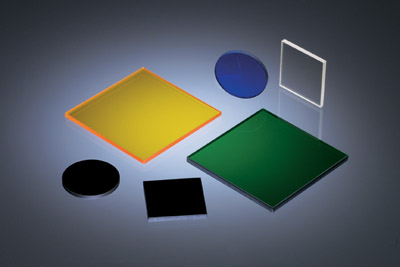Infrared filter refers to the dark red filter used for infrared photography. Even if the color is not too dark, it will have a corresponding effect The infrared filter is mainly used in the field of security monitoring, infrared gas analyzer, night vision products, infrared detectors, infrared receivers, infrared sensors, and infrared communication products. Specific products include: monitoring camera, remote controller, infrared curtain wall products, infrared induction toilet, faucet, hand sanitizer device, infrared temperature detector, infrared printer, interactive electronic whiteboard, infrared touch screen, fingerprint identification machine, etc.
The function of infrared filter is to filter the infrared ray: the color monitoring camera CCD can also sense the infrared ray, because it can sense the infrared ray, which will cause the D.S.P to be unable to calculate the correct color. Therefore, a filter must be added to separate the infrared ray part of the light, so only the color CCD needs to be equipped with a filter, and black and white do not need to be trimmed to enter the light: because the monitoring camera CCD is composed of many photoreceptors (CELLs), it is better to direct the light, However, in order to avoid disturbing the adjacent photoreceptors, the light needs to be trimmed. Therefore, the filter is not glass, but a quartz plate. Using the physical polarization characteristics of quartz, the incoming light is retained in the direct part and reflected off the oblique part to avoid affecting the nearby photoreceptors.

1. Filtration of infrared ray: the coating method and blue glass can be used. The coating is divided into vacuum coating and chemical coating. The chemical coating is to immerse the quartz sheet in the solvent for electroplating. The cost is low, but the coating thickness is uneven and easy to fall off. The vacuum coating is vacuum evaporation. The coating is uniform and not easy to fall off, but the cost is high The above is called IR Coating, which is designed to filter infrared rays. In addition, the so-called AR Coating coating is also used to increase the transmittance. Because light will have partial refraction and reflection when it passes through different media (such as entering the quartz plate from air). With the addition of AR Coating, the filter can achieve a transmittance of 98-99%, otherwise it will only have a transmittance of 90-95, which certainly has an impact on the sensitivity of the CCD In addition, blue glass is used to filter infrared light by “absorption”, while IR Coating filters infrared light by reflection, but the reflected light is easy to cause interference. If you only consider filtering infrared light, blue glass is a better choice. However, as mentioned above, glass cannot trim the light, so there is a so-called “two piece” filter, one piece of blue glass and one piece of quartz The blue glass is used to filter the infrared ray, and the quartz chip is used to trim the light, so only AR Coating is needed on the quartz chip.
2. As mentioned above, using the physical polarization characteristics of quartz, the incoming light can be trimmed in only one direction, while the direct part can be retained and the oblique part can be reflected. Usually, the monitoring camera only considers the horizontal resolution, so only the horizontal light is trimmed. Therefore, the monitoring camera should be in the right direction when pasting the filter What if the vertical light also needs to be trimmed? Simply stick two pieces and turn one of them 90 degrees. Therefore, there is a so-called “two piece” filter. One is used for horizontal trimming, the other is used for vertical trimming, and the other is used for IR coating to filter infrared.



